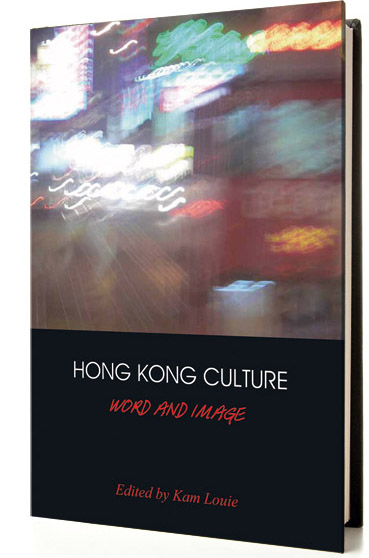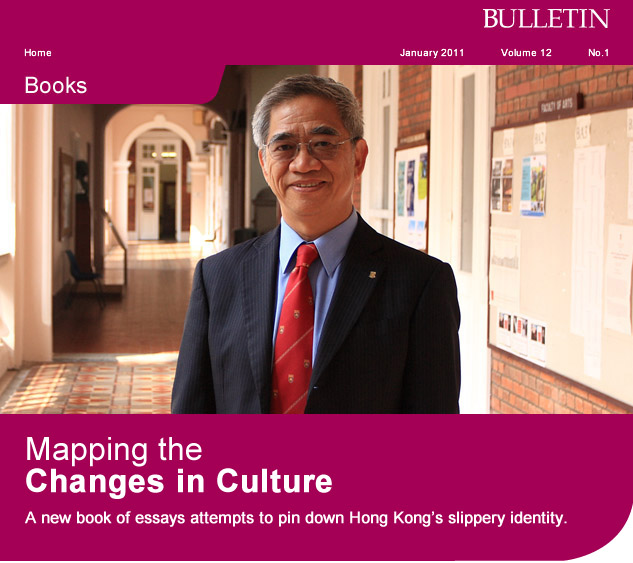| |
|
| |
|
| |
More than a decade on from the return of Hong Kong to Chinese sovereignty the Dean of the Faculty of Arts has gathered together in a new book the thoughts of a group of world experts on Hong Kong culture.
Hong Kong Culture: Word and Image, edited by Professor Kam Louie, explores the territory’s unique culture – neither British before the handover, nor entirely Chinese since – in 13 essays from experts as far afield as London, Sydney and California.
The book sprang from a conference in 2008, organized to explore how much Hong Kong had changed, if at all, since the handover.
|
| |
“We used word and image as themes for the conference so the discussions would be more focused,” says Professor Louie. “We asked people to talk about Hong Kong culture ten years after the return to China but as they talked they kept having to go back to before 1997, so the changes were already happening before this time. As it turns out, even now, changes, though very subtle, are continuing. China is changing very fast so it’s hard to say this is Chinese, this is Western, this is Southeast Asian, because all these ingredients make up Hong Kong and what was considered American yesterday is probably very Chinese today.”
Indeed, Gina Marchetti’s essay, Departing from ’The Departed’: The ’Infernal Affairs’ Trilogy, explores the borrowing and re-borrowing of celluloid style and image between Hong Kong and Hollywood, she points out that “John Woo has observed that when Hollywood directors look to Hong Kong films for inspiration, they end up imitating themselves, since Hong Kong has poached from American cinema for decades”.
“Yes,” agrees Professor Louie. “Hong Kong is very open to borrowing, I’m sure it happens everywhere but in Hong Kong it’s more conspicuous. This is a culture in transit: it seems nobody’s from here, everybody’s on their way somewhere else.”
|

|
|
| |
“It’s easy to see that process at work, but now you also see it in other places like Canada, America, Europe and Australia, where people come in and out all the time and there’s borrowing and re-borrowing and return and so on.”
Certainly, in any conversation on Hong Kong culture cinema plays an important part. “That’s because for a long time the rest of the world was aware of Hong Kong through people like Jackie Chan and Bruce Lee,” says Professor Louie.
And while interest in Hong Kong culture is growing this fascination has not been formalized into a major at any of the city’s universities.
“Hong Kong culture should be studied a lot more,” says Professor Louie. “There is a lot of material available. For example, Hong Kong has been the base for many writers who write in both Chinese and English. There are literally hundreds of books and articles on Eileen Chang alone. There is a lot of material in Chinese but relatively little on Hong Kong bilingual writers or its Anglophone writings. As HKU is an English-language university we should be making that material accessible worldwide.”
Conferences are an important part of exploring and understanding that culture.
|
| |
|
| |
| “We hold a lot of academic conferences in the Faculty and what we try to do is bring in experts from overseas, mostly from other Anglophone regions such as America and the UK, and let people see what we do. Such gatherings also allow international scholars to interact with our academics here, so that both parties have a chance to explore different ways of thinking and do research,” he adds. |
|
 |
| |
|
| |
|
| |
|
| |
|
| |
|
| |
|
| |
|
|

